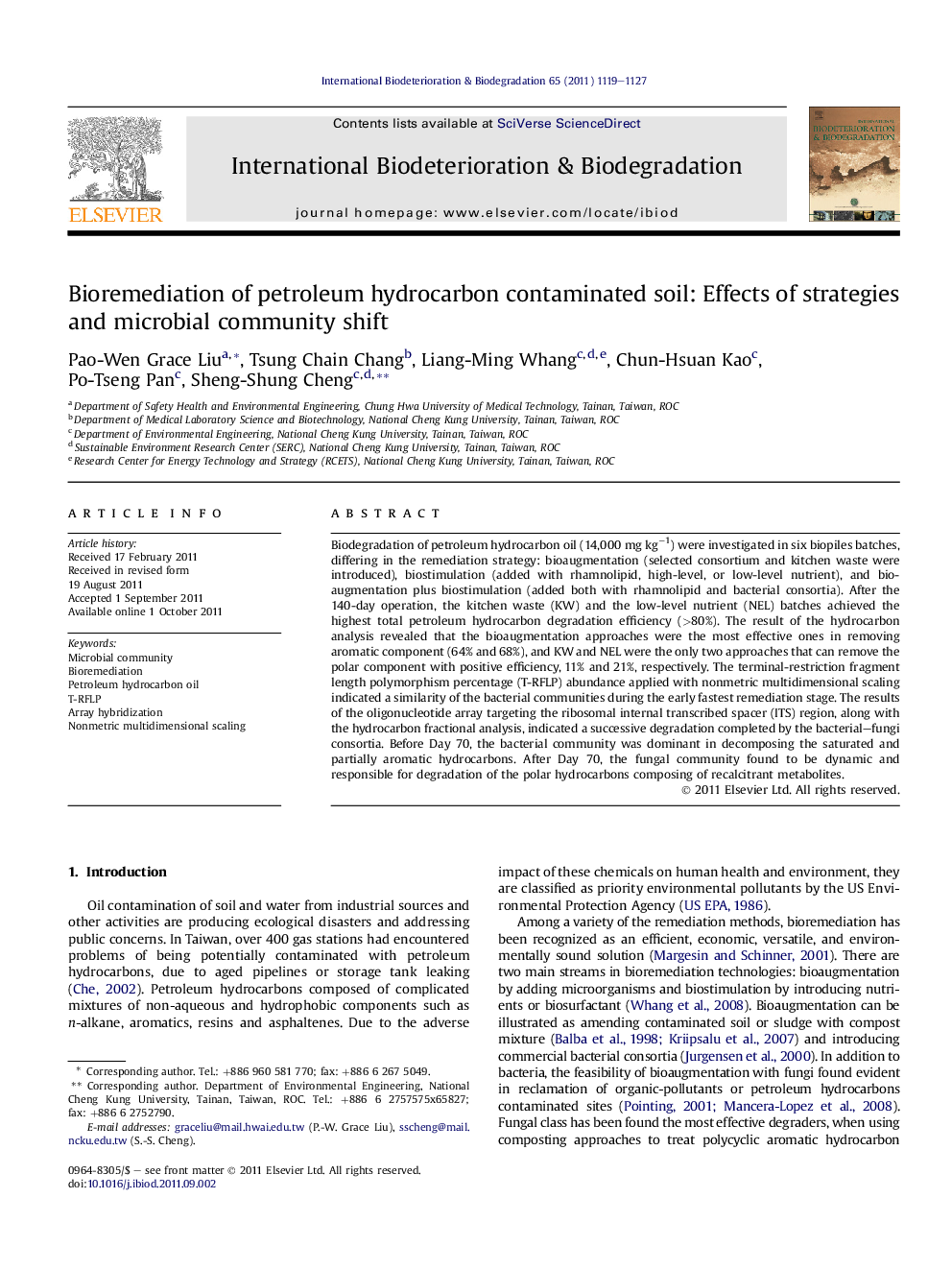| کد مقاله | کد نشریه | سال انتشار | مقاله انگلیسی | نسخه تمام متن |
|---|---|---|---|---|
| 4365277 | 1301750 | 2011 | 9 صفحه PDF | دانلود رایگان |

Biodegradation of petroleum hydrocarbon oil (14,000 mg kg−1) were investigated in six biopiles batches, differing in the remediation strategy: bioaugmentation (selected consortium and kitchen waste were introduced), biostimulation (added with rhamnolipid, high-level, or low-level nutrient), and bioaugmentation plus biostimulation (added both with rhamnolipid and bacterial consortia). After the 140-day operation, the kitchen waste (KW) and the low-level nutrient (NEL) batches achieved the highest total petroleum hydrocarbon degradation efficiency (>80%). The result of the hydrocarbon analysis revealed that the bioaugmentation approaches were the most effective ones in removing aromatic component (64% and 68%), and KW and NEL were the only two approaches that can remove the polar component with positive efficiency, 11% and 21%, respectively. The terminal-restriction fragment length polymorphism percentage (T-RFLP) abundance applied with nonmetric multidimensional scaling indicated a similarity of the bacterial communities during the early fastest remediation stage. The results of the oligonucleotide array targeting the ribosomal internal transcribed spacer (ITS) region, along with the hydrocarbon fractional analysis, indicated a successive degradation completed by the bacterial–fungi consortia. Before Day 70, the bacterial community was dominant in decomposing the saturated and partially aromatic hydrocarbons. After Day 70, the fungal community found to be dynamic and responsible for degradation of the polar hydrocarbons composing of recalcitrant metabolites.
► Kitchen waste and low-level nutrient enhancement were the most efficient remediation means.
► T-RFLP data in MDS indicated similarity of bacterial communities in the 1st remediation stage.
► ITS and hydrocarbon fraction data proved a successive degradation pattern by bacteria and fungi.
► Aspergillus fumigatus and Fusarium oxysporum were useful in degrading recalcitrant compounds.
Journal: International Biodeterioration & Biodegradation - Volume 65, Issue 8, December 2011, Pages 1119–1127